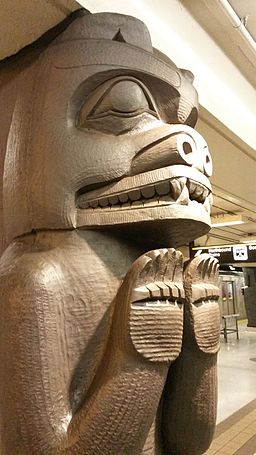Cultural Profile
The Wuikinuxv have lived along the Whannock River–which links Rivers Inlet to Owikeno Lake–in the Central Coast region of British Columbia for the past ten thousand years. Before the arrival of the whites, Wuikinuxv people lived well; enjoying the benefits of their prime location along a vital native trade route that was surrounded by an abundance of natural resources. On this foundation they built a complex and well-organized society. Their language,Oweekala, is of the Kwakiutl linguistic group. Several suggestions have been put forth as to the meaning of the name Oweehena. One is “portage-makers,” as the people once portaged between Rivers Inlet and Owikeno Lake. The most recent translation is “right-minded people.”
The Wuikinuxv survived primarily on the millions of salmon that swam upriver to spawn. In fact, Wuikinuxv culture virtually revolved around fishing, and was a great source of wealth for the community. White people were quick to exploit the immense quantities of fish, building sixteen canneries around Rivers Inlet during the late 1800s. The lives of the Wuikinuxv were significantly marked by cannery life. Many Wuikinuxv elders remember working in the canneries with Chinese, Japanese and European immigrants. Since that time, the salmon population has dropped so dramatically that commercial fishing is now nearly non-existent among the Wuikinuxv.
The great forests of the area provided the Wuikinuxv with the Western red cedar. From the grand trunks of this tree they carved ocean-going canoes and totem poles, and built longhouses and boardwalks. The bark was set aside and used to make clothing, baskets and other household items.
The Wuikinuxv, like other Native groups, suffered greatly from the effects of smallpox and other European diseases. Those who managed to survive into the 20th century lost nearly everything when the village of Oweekeno was ravaged by fire in 1935. Their homes, along with treasured heirlooms and traditional sacred objects, were lost.
Today, the village of Oweekeno is small, accessible only by bush plane or boat. The nearest town of significant size is Port Hardy across the Queen Charlotte Strait. In order to access education, health care, and find employment, the majority of people find it necessary to leave their communities and ancestral homeland.
Sponsor: : Mr and Mrs Norman Rietze | Photos courtesy Wikimedia Commons and Flickr






